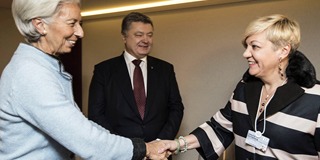
The Last Hurdle for Ukraine’s Recovery
Ukraine has made remarkable progress on reducing its fiscal deficit and public debt, positioning the economy for strong growth. But, as is so often the case in post-Soviet states, old-school clientelism could quickly smother the promise of prosperity.
KYIV – Ukraine’s capital abounds with signs of hope and anarchy. The country has experienced an impressive economic turnaround, but corruption remains rife. President Petro Poroshenko’s administration has stabilized public finances, but failed to rein in clientelism.